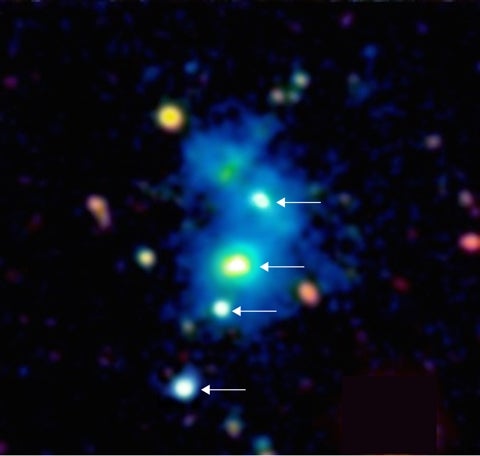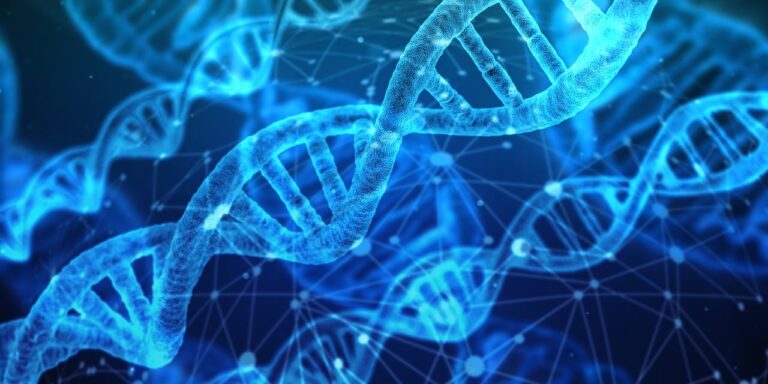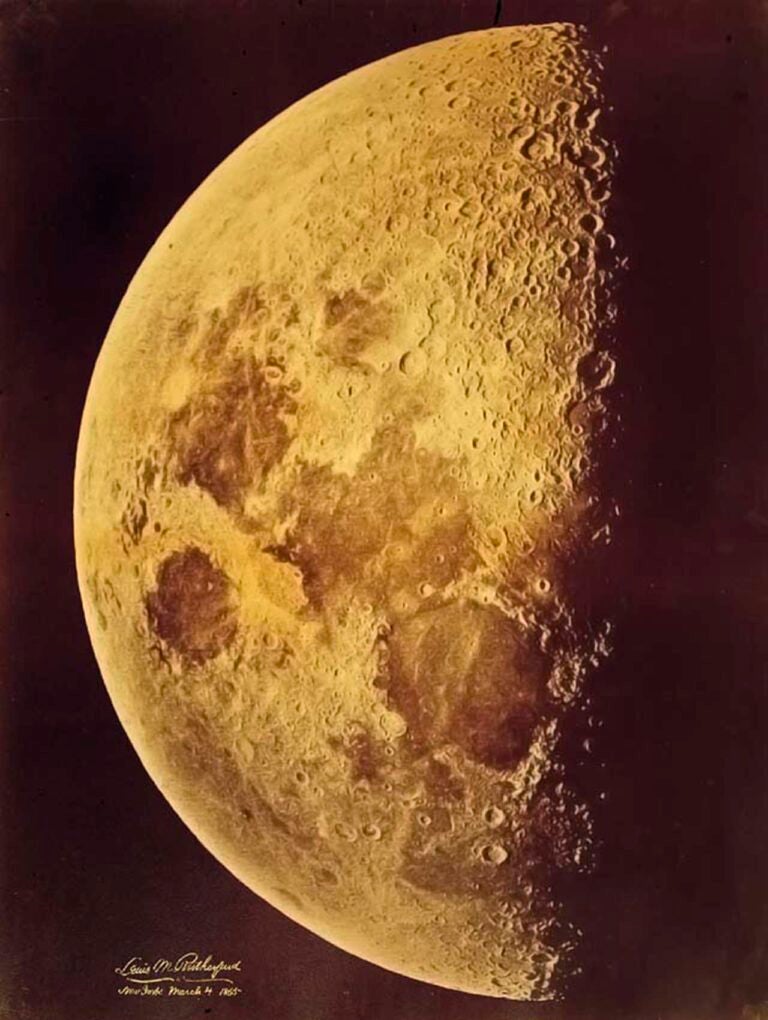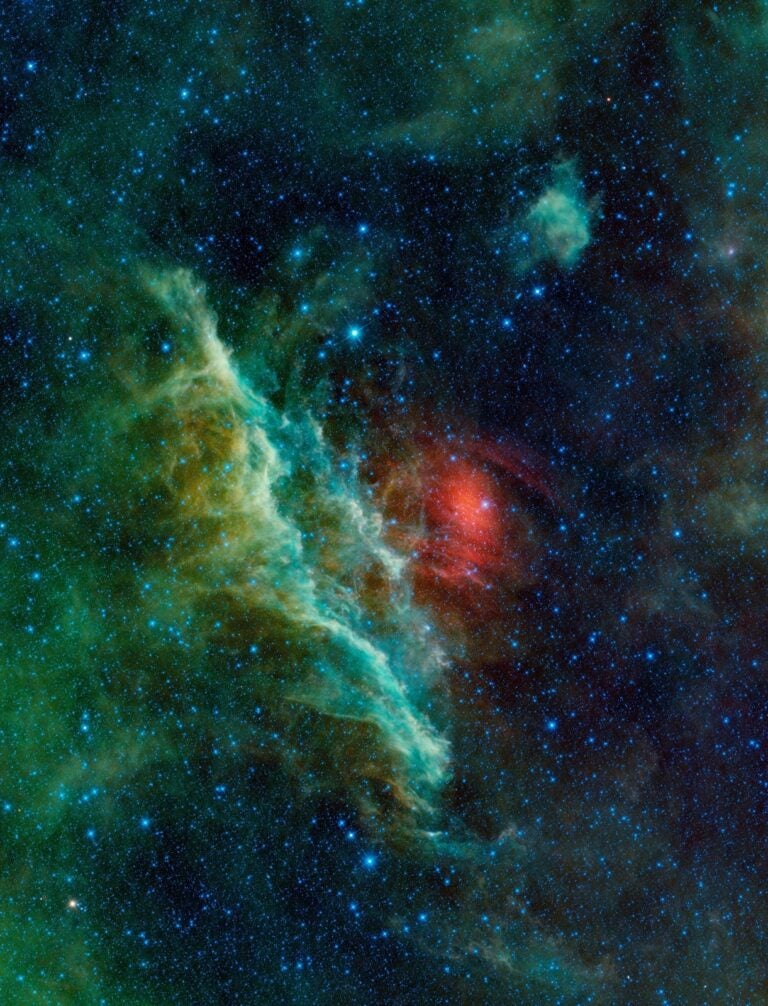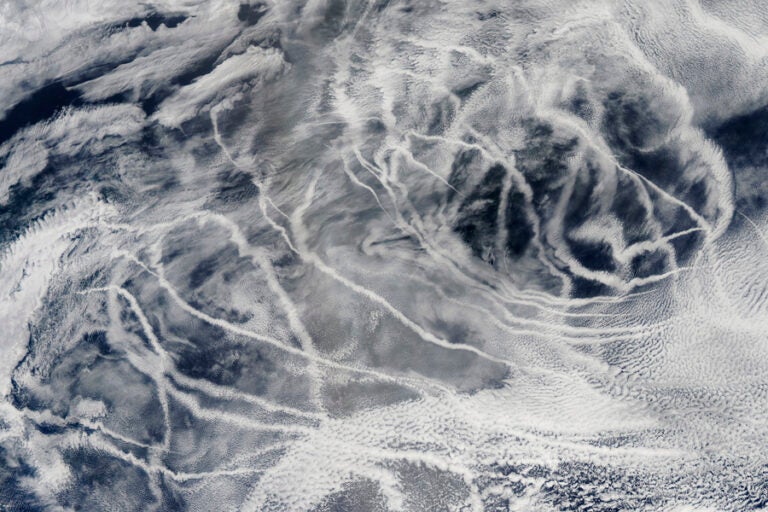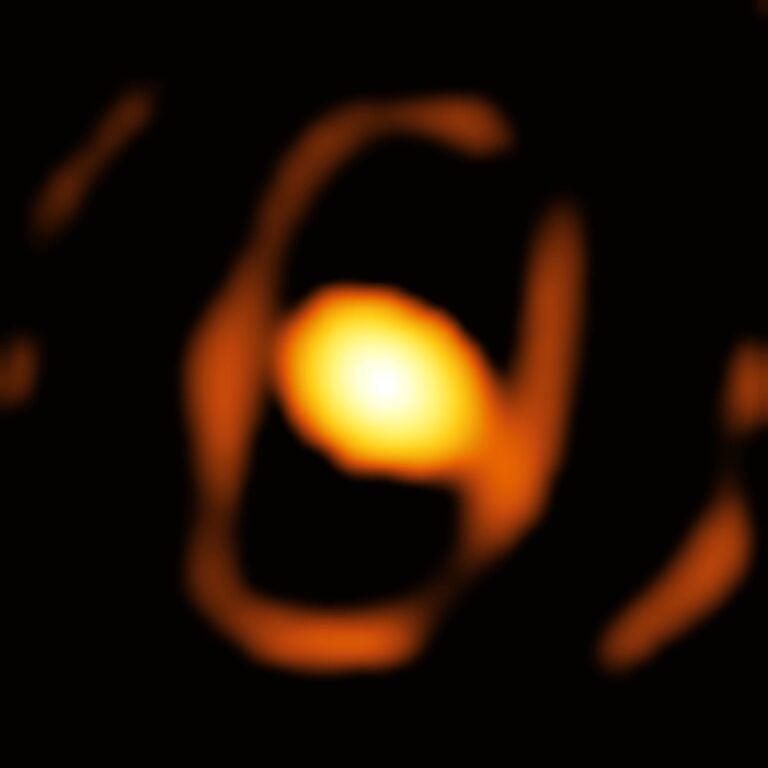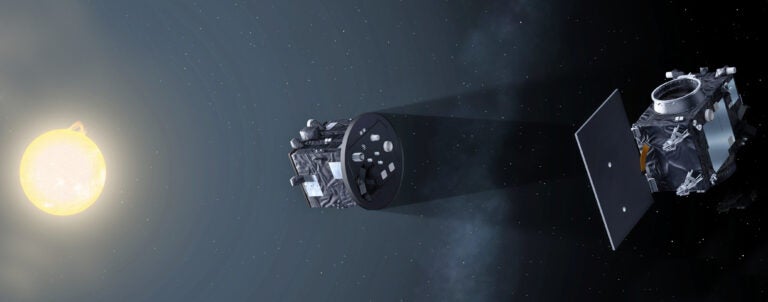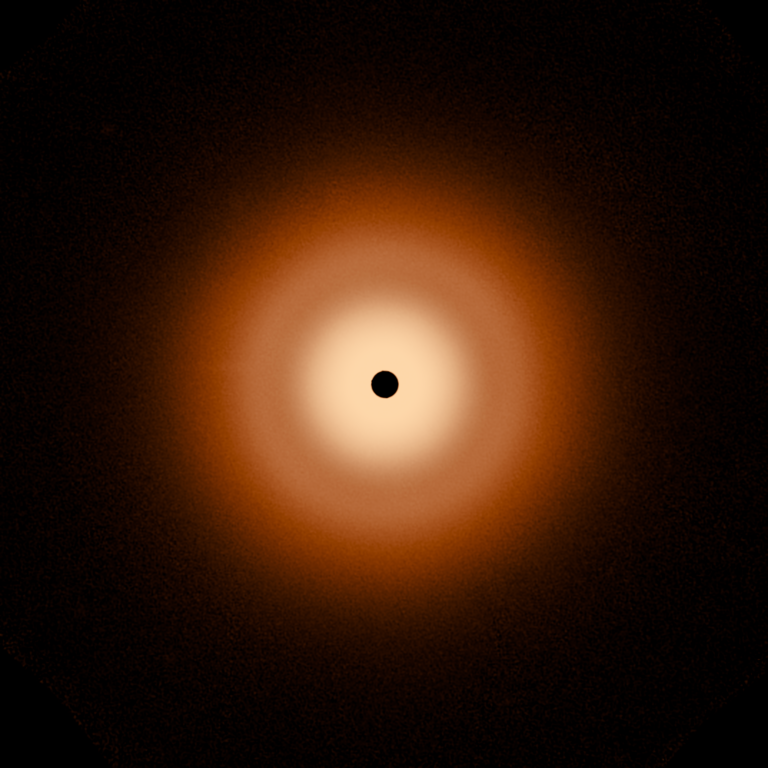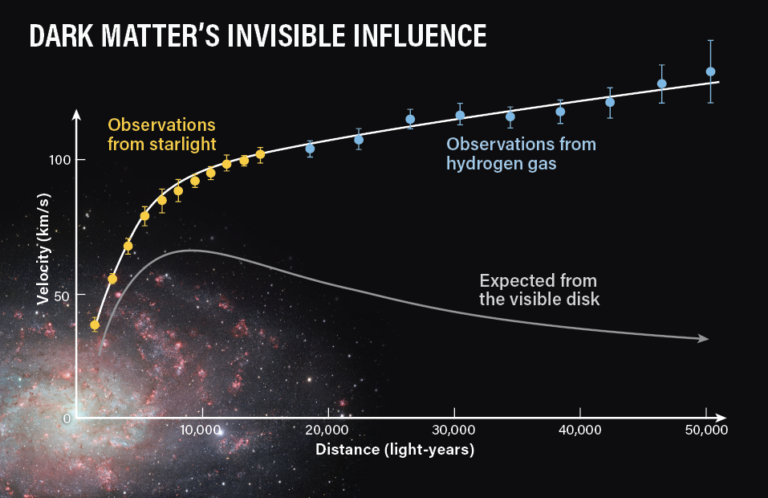To find this protocluster, Joseph F. Hennawi of the Max Planck Institute for Astronomy in Heidelberg and colleagues searched for the extremely bright centers of galaxies hosting actively feeding supermassive black holes. These quasars, as they are known, are used in two ways: first, as markers for large galaxies, and second, as flashlights to see through nearby gas clouds. Such gas clouds glow because they absorb the active galaxy’s light and then re-emit it. The researchers were looking for a specific color of light that energized hydrogen throws out, called Lyman alpha.
They spied four active galaxies near to one another on the sky. When they studied their light in more detail, they saw all four lie the same distance from Earth and the light from these objects has been traveling for 10.6 billion years. No one had ever seen, nor expected to find, four quasars in the same gravitationally bound group, so this discovery was a surprise.
The team also saw these galaxies embedded in an enormous cloud of hydrogen. The conglomeration existed when the universe was just about 3.2 billion years old, and the gas clump stretches about 1 million light-years across. “It’s 100 percent clear that it’s a protocluster,” says team member J. Xavier Prochaska of the University of California, Santa Cruz. “It’s a structure that will evolve into something like [the] Virgo [Cluster] today.”

